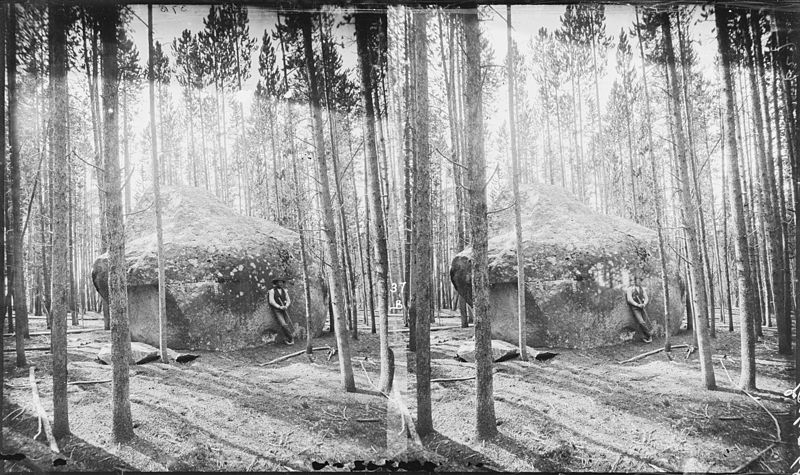What are the forces and what were the tools?
 |
| Granite boulder near Yellowstone Canyon. Photograph by William Henry Jackson (1843–1942) |
They look lonely here, strangers in a strange land, - huge blocks, angular mountain chips, the largest twenty or thirty feet in diameter, the chips that Nature has made in modeling her landscapes, fashioning the forms of her mountains and valleys. And with what tool were they quarried and carried?Although controversial at the time, Muir believed receding glaciers, aided by water (solid and liquid) and by gravity, shaped the Sierra Nevada landscape by carving, fracturing, transporting, and depositing rock.
― John Muir, My First Summer in the Sierra
The Sierra Nevada was cold enough 2-3 million years ago to support ice fields and glaciers along the its crest. Ice fields sent out and sustained glaciers in many of the valleys. Muir recognized that:
Glacial ice quarried and transported huge volumes of rock debris.Evidence suggests glacial ice scoured and modified the landscape. As the glaciers began melting away, much of the rock debris was deposited in situ, or flushed into valleys by swollen streams of melt-water.
 |
| Angular boulders on the summit of Mt. Whitney. |
"Muir invented a new grammar, a contagious vocabulary for communicating the splendor of the natural world."Through rich prose, and via clear-thinking and insightful observation, Muir inspired and urged us into the modern paradigm of environmental consciousness -- the recognition that man is one of many creatures blessed by the vast wealth of nature and its phenomena.
"Climb the mountains and get their good tidings. Nature's peace will flow into you as sunshine flows into trees. The winds will blow their own freshness into you, and the storms their energy, while cares will drop away from you like the leaves of Autumn."Muir's writing is both analytic and poetic.
― John Muir
To contemplate and consider the events and phenomena that surround us, these questions remain indispensable:
What are the forces and what were the tools?
REFERENCES
- Muir, John, 1911. My First Summer in the Sierra and Selected Essays.
- John Muir, Wikipedia.
- Ecology of the Sierra Nevada. Wikipedia.
- Sierra Nevada, Wikipedia.



